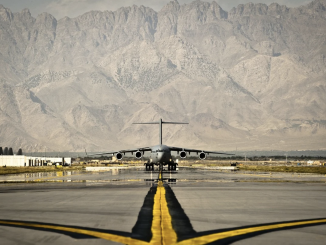
On March 9, 2022, a super-sonic Brahmos cruise missile crashed inside Pakistani territory
that India later claimed was an ‘accidental firing’ and a technical malfunction during routine
maintenance. This justification raises serious doubts about the safety and security of the
Indo-Russian jointly produced ‘Brahmos’ cruise missile and of the other delivery systems
that are in India’s inventory. Subsequent reports appearing in the media, however, indicate
that the incident may not be a result of a technical glitch but a supervisory lapse where a
Group Captain rank officer in charge of the mobile command post was held responsible for
the incident. If true, this is more disturbing than a technical malfunction as it exposes
serious gaps in India’s command and control architecture which may not be geared to
preclude the possibility of an accidental or unauthorized launch. This is dangerous as such
incidents could lead to miscalculation and unintended escalation between the two nuclear-
armed neighbours that have a long history of distrust and military crises.
To protest over India’s unprovoked violation of its airspace, Pakistan’s Ministry of Foreign
Affairs summoned India’s Charge d’ Affairs and demanded a thorough and transparent
investigation of the incident. Later the spokesperson from Pakistan Air Force, Air Vice
Marshal Tariq Zia briefed the media along with DG ISPR and provided details of the incident
and the danger that the rogue missile posed to the commercial airliners that were operating
in the air corridors at the time of the incident. Details shared with the public indicate that
Pakistan’s Air Defense system was able to track the complete flight profile of the missile but
chose not to retaliate with a ‘tit-for-tat’ kind of a response as it could have led to
unintended escalation.
Was it a deliberate or an accidental launch? After the incident, some Pakistani
commentators suggested that the missile launch could have been a deliberate attempt by
the Indian side to gauge Pakistan’s response and to map its air defense sites. It was also
suggested that Pakistan should have shot down the missile to give a clear message to the
Indian side that such transgressions would not go unanswered.
These reactions were based on prevalent concerns that India may be contemplating a pre-
emptive first strike option and may have already given up its ‘No First Use’ (NFU) nuclear
posture against Pakistan. These apprehensions are not without merit as several senior
Indian decision-makers have been signalling in the recent past about such a possibility.
Nevertheless, the likelihood of a ‘bolt from the sky’ kind of a pre-emptive strike would still
need a brewing crisis and some justification, which was absent in the recent episode,
allowing the Pakistani side to conclude that the missile was not part of a pre-emptive ‘first
strike’ and could have been an unintended missile launch that went rogue.
The air defense mapping theory also does not hold much credence as India has several
other means available to locate Pakistan’s radar deployments. India’s network of satellites
provides adequate situational awareness to its military planners, making it less plausible
that India would use one of its supersonic cruise missiles for the purpose. It has a bilateral
agreement with the US known as Basic Exchange and Cooperation Agreement (BECA), which
provides India access to classified real-time signal intelligence (SIGINT) and other sensitive
information gathered by the US satellites about India’s Northern and Western borders. This
has already enhanced Indian military’s situational awareness for planning conventional or
nuclear strikes against Pakistan as part of its evolving counterforce temptations.
Given these facts, it is quite likely that the Indian missile was not necessarily a planned
activity to gauge Pakistan’s response or to map its Air Defense deployments but was more
likely an accidental launch, probably during an operational inspection as has been reported
in the media. However, looking at the flight path of the missile it could be concluded that
India’s strategic missiles are operationally deployed in a higher readiness status with pre-fed
coordinates against targets inside Pakistan, and the launch authority has already been pre-
delegated to a relatively lower level rank with no central oversight that could have
prevented such incidents.
Why Pakistan did not shoot down the incoming missile? Whether Pakistan could have
shot down the incoming missile or not is a question that merits some technical
understanding of anti-missile systems that are available in several countries, including India.
At present, there is no foolproof missile defense system in the world that could guarantee
the shooting down of all incoming missiles and India’s newly acquired S-400 system are no
different.
The supersonic cruise missile that entered the Pakistani territory flew for 3 mins and 44
seconds before crashing inside Pakistani. This is a short time for any air defense operator to
identify, authorize and ensure a successful interception of the missile. Even the Indian
operators were not able to track their own missile and may have intended to cover up their
mistake had it not been revealed by the Pakistani side.
Command and control failure? India maintains opaque command and control
structure and has provided limited transparency on how it manages its strategic assets
during peacetime and in crises. Contrary to the general perception of maintaining an
assertive political control there have been several incidents in the recent past that indicate
serious gaps in India’s C-2 system and safety and security measures that are put in place to
prevent such incidents. In 2018, an accident caused serious damage to India’s nuclear-
capable submarine Arihant, rendering it unserviceable for several months. During the 2019
Balakot crisis, the Indian Air Force shot down its own helicopter, killing all servicemen
onboard. In the recent past there have been several episodes of attempted nuclear
smuggling where uranium ore was stolen from India’s nuclear facilities and was being sold
to unidentified buyers on the black market. These were only reported incidents while there
could be several other events that may have gone unreported.
The lack of oversight seems to be a result of prevalent dissonance amongst India’s strategic
enclave (political, military and scientists). The political leadership considers it to be their
prerogative to maintain strict oversight over India’s strategic and nuclear capabilities with
little or no understanding of how these could be employed to achieve the desired political
objectives. The disconnect in India’s NFU commitment amongst senior political leadership is
one such example.
The military leadership remains incoherent due to inter-service rivalries and also because
they are generally kept outside the nuclear and strategic decision-making process by the
political leadership, primarily to limit their influence. The scientific community, on the other
hand, continues to build solutions for unspecified threats, including the development of
weapons ranging from short range to inter-continental ballistic missiles, without taking into
consideration the military needs. This visible dissonance amongst all the three components
(political, military and scientists) makes it difficult to ensure a coherent and fail-safe C-2
structure that could avoid the embarrassment that India had to face after the recent
accidental launch of a cruise missile.
The relevance of a bilateral cruise missile test notification. In 2005, India and
Pakistan agreed to notify each other in advance of impending ballistic missile tests. This
confidence building measure was incorporated from the Cold War experience and aims to
preclude the possibility of miscalculation as ballistic missiles make detectable trajectories
which could be interpreted as a pre-emptive strike by the other side leading to
miscalculations. A similar arrangement to notify each other of a cruise missile test as a
confidence building measure, however, may not be relevant as these missiles do not make
detectable ballistic trajectories and generally fly at very low altitudes to avoid detection by
the adversary’s radars. A cruise missile test notification, therefore, would have no significant
dividend other than sharing of information with each other. Even if India and Pakistan had
such an agreement in place it would be used to notify cruise missile tests only, and not the
accidental launches, thus making the argument of negotiating a bilateral agreement on
cruise missile test notification redundant.
Conclusion. The recent incident of accidental missile firing is a serious breach of safety
protocols that could have inadvertently ended in a serious crisis between the two nuclear-
armed states that have a long history of mutual distrust. To obviate any such possibility in
the future, it is necessary for India to carry out an appraisal of its C-2 structure and provide
transparency to its neighbours and the rest of the international community about its
management structure, so as to help restore confidence in India’s ability in managing its
strategic assets during peace time and, more importantly, during a military crisis.
![]()




Be the first to comment